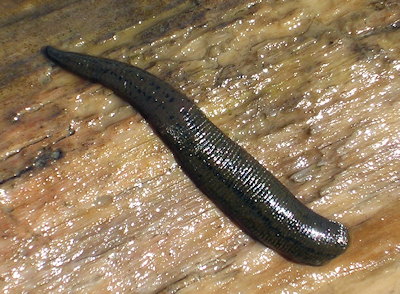A mashup of three effective patterns
![]() |
| Flugenzombie in Dirty Baitfish coloration |
It's no secret that we like to take effective patterns and mash them up into what we hop will be effective bugs. The
Chimera pattern (that Curtis has promised to start wearing as earrings because he loves it so much) is a good example of a fly that wasn't designed to match any one specific bug, rather to be a "close enough" type of pattern that the fish might take for a lot of different things. We, as human beings, are pretty picky about what we actually put into our mouths with the intent of eating, for example: If I hid Curtis' glasses from him and lined up a delicious chocolate whopper, a raisin, and a deer turd on a table and told him that all three had some caloric value, he'd probably take his time before figuring out that one is literally a piece of crap, one might as well be a piece of crap, and only one of them is actually worth making the effort of putting in his mouth. Fish? They are a bit different. They don't have the highly developed taste buds that Curtis has, so they eat more like me... If it's of caloric value, it's going down the hatch. Before I start getting hate mail about all of the picky 20 inchers that you fish for that only eat a properly presented baetis pattern with two tails and a body made from dubbing color 38923-A presented on 7x tippet, I do understand that lot of fish are picky eaters... It's just that we shouldn't lose the mindset that fish are searching for calories, and many times a pattern that is "close enough" will do the trick.
Now that I got that little rant out of my scattered brain I can tell you about the Flugenzombie. The name is more of a joke than anything, but this fly was rumored to have eaten the
Cheech Leech, The
Complex Twist Bugger, and the
Lunch Lady to morph into a mashup of all three. I use the body and tail from the Complex Twist, I use a collar of marabou and silicone legs from the Cheech Leech, and I use a Lunch Lady head. One thing I forgot to do on the video is attach speckled flashabou at points 5:15, and 10:24... The flash should be tied in front of the sections of the fly, and kind of act as an over "wing" that extends to the length of the tail. You can see the flash in the example patterns that I show. The Flugenzombie is a takeoff of other patterns that were already not an exact copy of anything that lives in the water. All I know is that the fish either love this style and want to eat it, or they hate it and they want to kill it. To accomplish either of these ends it will need to be in the mouth of the fish at some point. Win win.
~Cheech
Recipe:**A good substitute for the Gamakatsu B10S is the Partridge Attitude Streamer
(+)Articulation Wire Flush Cutters
(+)Stonfo Comb/Brush Tool
(+)Dirty Baitfish![]()
Hook 1: Daiichi 2461 #1
(+)Hook 2: Gamakatsu B10S #1
(+)Eyes: Ballzeyes - Large, Chartreuse Eye
(+)Thread: Danville 140 - Black
(+)Tail1and Collar1: Nature's Spirit Prime Long Marabou - Muskrat Gray
(+)Tail2 and Collar2: Nature's Spirit Prime Long Marabou - Tan
(+)Body1: Schlappen - Heron Gray
(+)Body2: Schlappen - Tan
(+)Body3: UV Polar Chenille - Large Gold
(+)Flash: Flashabou - Speckled Gold
(+)Connection1: Articulation Wire
(+)Connection2: Articulation Bead - Gunmetal
(+)Legs: Silicone Streamer Legs - Sparkle Sand
(+)Head1: Bruiser Blend Jr. - Alpha Wolf
(+)Head2: Bruiser Blend Jr - Cream
(+)Cali 420![]()
Hook 1: Daiichi 2461 #1
(+)Hook 2: Gamakatsu B10S #1
(+)Eyes: Ballzeyes - Large, Red Anodized
(+)Thread: Danville 140 - Red
(+)Tail1 and Collar1: Nature's Spirit Prime Long Marabou - Dark Olive
(+)Tail2 and Collar1: Nature's Spirit Prime Long Marabou - Claret
(+)Body1: Schlappen - Olive
(+)Body2: Schlappen - Black
(+)Body3: Senyo's Aqua Veil Chenille - Chocolate Covered Cherry
(+)Flash: Flashabou - Red
(+)Connection1: Articulation Wire
(+)Connection2: Articulation Bead - Ruby Red
(+)Legs: Silicone Streamer Legs - Chrome Watermelon
(+)Head: Bruiser Blend Jr. - California 420 (top and bottom)
(+)Wyoming Sheep Herder![]()
Hook 1: Daiichi 2461 #1
(+)Hook 2: Gamakatsu B10S #1
(+)Eyes: Hareline Double Pupil Eyes - Large, Yellow White/Black
(+)Thread: Danville 140 - Yellow
(+)Tail1 and Collar1: Nature's Spirit Prime Long Marabou - Brown
(+)Tail2 and Collar2: Nature's Spirit Prime Long Marabou - Yellow
(+)Body1: Schlappen - Fiery Brown
(+)Body2: Schlappen - Yellow
(+)Body3: Senyo's Aqua Veil Chenille - Peanut Brittle
(+)Flash: Flashabou - Speckled Copper
(+)Connection1: Articulation Wire
(+)Connection2: Articulation Bead - Nuclear Corn
(+)Legs: Silicone Streamer Legs - Speckled Pumpkin
(+)Head1: Bruiser Blend Jr. - Brown
(+)Head2: Bruiser Blend Jr - Canary
(+)Pink Britches![]()
Hook 1: Daiichi 2461 #1
(+)Hook 2: Gamakatsu B10S #1
(+)Eyes: Hareline Double Pupil Eyes - Large, Pink White Black
(+)Thread: Danville 140 - White
(+)Tail1: Nature's Spirit Prime Long Marabou - Pink
(+)Tail2: Nature's Spirit Prime Long Marabou - White
(+)Body1: Schlappen - Pink
(+)Body2: Schlappen - White
(+)Body3: Senyo's Aqua Veil Chenille - Bubble Gum
(+)Flash: Flashabou - Pink
(+)Connection1: Articulation Wire
(+)Connection2: Articulation Bead - Magenta Fire
(+)Legs: Silicone Streamer Legs - Speckled Shrimp
(+)Head1: Bruiser Blend Jr. - Neon Pink
(+)Head2: Bruiser Blend Jr - White
(+)

































